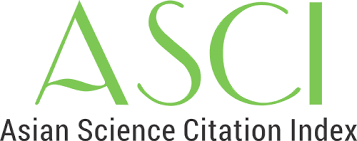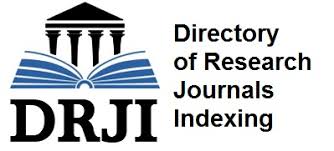Enhancing Buyer Competitive Advantage: The Role of Supplier Flexibility in the FMCG Sector
Keywords:
FMCG, supplier, flexibility, performance, competitive advantage, customerAbstract
Background of the study: This research intends to evaluate the impacts of supplier flexibility on supplier performance and buyer competitive advantage, particularly in Pakistan's fast-moving consumer goods (FMCG) sector. The current world has made buyer competitiveness a function of supplier performance, and this paper tries to identify factors such as information sharing, information quality, environmental uncertainties, and buyer-supplier relations. The study would be aimed at filling the gaps in the existing literature, especially about supplier flexibility and how it leads to improvement for both the supplier and the buyer.
Methodology: A causal research design was used in this study. Purposive sampling was utilised to collect data from 288 respondents who work in FMCG companies in Karachi, Pakistan. Responses were collected on a five-point Likert scale for providing numerical values. Cronbach's Alpha values were used for data analysis through Smart PLS, and the reliability of the data collected was ensured.
Results: Thus, the analysis indicates that the supplier's flexibility enhances supplier performance and contributes to competitive buyer advantage. It supports partial mediation. Thus, the commitment of both buyers and suppliers and the exchange of accurate information between them contribute to higher supplier performance and flexibility.
Conclusions: Environmental uncertainty is the primary driver of buyer competitive advantage. The study sets up supplier flexibility as a significant factor in developing competitive advantage in the FMCG industry and underlines the need for supplier development and relationship management. Firms should focus on these areas to improve market sensitivity and sustain competitive advantage.
References
1. Afthanorhan, A. G. (2021). Discriminant validity: A comparison of CB-SEM and consistent PLS using Fornell & Larcker and HTMT approaches. Journal of Physics, 1874(1), 1–6.
2. Allen, R. P. (2013). How can we do better improving performance in global textile and apparel supply chains? Proceedings of the International Conference on Hospitality & Tourism Management, 70(1), 2–3.
3. Andreas, I. N. (2006). Perceived information quality in data exchanges: Effects on risk, trust, and intention to use. Information Systems Research, 17(4), 332–351.
4. Anh, T. T. (2020). Contribution of supplier relationship management to firm performance. VNU
Journal of Economic and Business, 36(5), 11–20.
5. Bai, C., & Bai, B. (2021). Sustainable buyer-supplier relationship capability development. Annals of Operations Research, 304(1), 1–34.
6. Chowdhury, S., et al. (2021). COVID-19 pandemic-related supply chain studies: A systematic review. Transportation Research Part E: Logistics and Transportation, 148.
7. Ding, J. D. (2014). Relationships between quality of information sharing and supply chain food quality in the Australian beef processing industry. The International Journal of Logistics Management, 25(1), 85–108.
8. Fawcett, E. S. (2007). Information sharing and supply chain performance: The role of connectivity and willingness. An International Journal, 12(5), 358–368.
9. Forkmann, S. H. (2016). Supplier relationship management capability: A qualification and extension. Industrial Marketing Management, 57, 185–200.
10. Ghomi, V. G. (2021). Antecedents and consequences of customer flexibility: Establishing the link to firm competitive advantage. Journal of Retailing and Consumer Services, 62.
11. Gosling, J. P. (2010). Supply chain flexibility as a determinant of supplier selection. International Journal of Production Economics, 128(1), 11–21.
12. Gilal, F. G., & Gilal, G. (2016). Supply chain management practices as a contemporary source of securing competitive advantage and organizational performance: Evidence from the FMCGs of Pakistan. International Journal of Information Systems and Change Management, 8(3), 246–267.
13. Gyampah, K., et al. (2019). Supplier relationship management and firm performance in developing economies: A moderated mediation analysis of flexibility capability and ownership structure. International Journal of Production Economics, 208, 160–170.
14. Hair, J. F. (2017). PLS-SEM or CB-SEM: Updated guidelines on which method to use. International Journal of Multivariate Data Analysis, 1(2), 107–123.
15. Hamid, A. R. (2017). Discriminant validity assessment: Use of Fornell & Larcker. Journal of Physics: Conference Series, 890(1).
16. Harsasi, M. (2017). Improving supply chain performance through the implementation of supply flexibility. Global Journal of Business & Social Science Review, 5(1), 30–36.
17. Henseler, J., & Ringle, C. M. (2015). A new criterion for assessing discriminant validity in variance-based structural equation modeling. Journal of the Academy of Marketing Science, 43(1), 115–135.
18. Huo, B., & Zhao, X. (2020). The impact of information sharing on supply chain learning and flexibility performance. International Journal of Production Research, 59(5), 1411–1434.
19. Jangga, R. A. (2015). Effect of environmental uncertainty and supply chain flexibility towards supply chain innovation. Procedia Economics and Finance, 31, 262–268.
20. Johnson, M. T. (2011). The relationships between supply chain and firm performance. International Journal of Physical Distribution & Logistics Management, 41(2), 88–103.
21. Khalid, S. S. (2021). Effect of demography on quality perception of FMCG customers. Governance and Management Review, 6(1), 163–175.
22. Kim, M. C. (2017). The impact of supplier innovativeness, information sharing, and strategic sourcing on improving supply chain agility: Global supply chain perspective. International Journal of Production Economics, 187, 42–52.
23. Koufteros, A. X. (2010). Organizational integration for product development. Decision Sciences, 41(1), 49–80.
24. Kumar Singh, R. K. (2019). Measuring the flexibility index for a supply chain using graph theory matrix approach. Journal of Global Operations and Strategic Sourcing, 13(1), 56–69.
25. Latunreng, W., & Nasirin, C. (2019). Competitive advantage: Exploring the role of partnership with suppliers, customer relationship and information sharing as antecedents. International Journal of Supply Chain Management, 8(6), 405–410.
26. Lee, J., et al. (2009). Supplier alliances and environmental uncertainty. International Journal of Production Economics, 120(1), 190–204.
27. Lee, H. V. (2018). The effects of supply chain management on technological innovation: The mediating role of guanxi. International Journal of Production Economics, 205, 15–29.
28. Lees, S., et al. (2020). Relationship quality and supplier performance in food supply chains. International Food and Agribusiness Management Review, 23(3), 425–445.
29. Li, S., et al. (2006). Accessing information sharing and information quality in supply chain management. Decision Support Systems, 42(3), 1641–1656.
30. Li, W. H. (2012). The impact of supplier development on buyer competitive advantage: A path analytic model. International Journal of Production Economics, 135(1), 355–366.
31. Lin Han, S. S. (2014). Antecedents and performance outcomes of flexibility in industrial customer-supplier relationships. Journal of Business Research, 67(10), 2115–2122.
32. Lin Soh, K. J. (2016). The role of suppliers in establishing buyer-supplier relationships towards better supplier performance. International Journal of Productivity and Quality Management, 17(2), 183–197.
33. López-Gamero, M. D., et al. (2011). Environmental uncertainty and environmental management perception. Journal of Business Research, 64(4), 427–435.
34. Luo, J., et al. (2016). Fits and misfits of supply chain flexibility to environmental uncertainty. The International Journal of Logistics Management, 27(3), 862–885.
35. Mejooli, M. S. (2022). Effect of supplier relationship on procurement performance of public universities in Nairobi County. Journal of Economics, Management Sciences and Procurement, 2(1), 13–26.
36. Mishra, R. (2020). Empirical analysis of enablers and performance outcomes of manufacturing flexibility in an emerging economy. Journal of Manufacturing Technology Management, 31(6), 1301–1322.
37. Moon, L. K. (2012). An instrument for measuring supply chain flexibility for textile and clothing companies. European Journal of Operational Research, 222(2), 191–203.
38. Mugarura, T. J. (2010). Buyer-supplier collaboration, adaptation, trust, commitment, and relationship continuity of selected private manufacturing firms in Kampala. (Master’s dissertation, Makerere University Business School, Uganda).
39. Nagarajan, V. S. (2013). The effect of environmental uncertainty, information quality, and collaborative logistics on supply chain flexibility of small manufacturing firms in India. Asia Pacific Journal of Marketing and Logistics, 25(5), 784–802.
40. Nayal, P., et al. (2021). COVID-19 pandemic and consumer-employee-organization wellbeing: A dynamic capability theory approach. Journal of Consumer Affairs, 56(1), 359–390.
41. Nidal, D. (2016). Flexibility through information sharing: Evidence from the automotive industry in Sweden.
42. Orue, A. L. (2021). Theory of constraints case study in the make-to-order environment. Journal of Industrial Engineering and Management, 14(1), 72-85.
43. Paulraj, A., Chen, I. J., & Flynn, J. E. (2007). Environmental Uncertainty and Strategic Supply Management: A Resource Dependence Perspective and Performance Implications. The Journal of Supply Chain Management, 43(3), 29-42.
44. Putra, A. H. (2020). Influence of Information Quality on Retailer Satisfaction through Supply Chain Flexibility and Supplier Relationship Management in the Retail Industry. Teknic Industri Journal, 22(2), 93-102.
45. Rome, E. S. (2021). HTMT2–An Improved Criterion for Assessing Discriminant Validity in Structural Equation Modeling. Emerald Publishing Limited, 121(12), 2637-2650.
46. Ronkko, M. C. (2022). An Updated Guideline for Assessing Discriminant Validity. SAGE Journal Organizational Research Methods, 25(1), 6-14.
47. Saghiri, S. S., & Wilding, R. (2016). Supplier Flexibility and Postponement Implementation. International Journal of Production Economics, 173, 170-183.
48. Shaikh, M. J. (2012). TQM and Business Performance: An Investigation into FMCG Companies in Pakistan. International Journal of Scientific & Technology Research, 1(10), 1-12.
49. Shukor, A. N., & Rasli, A. (2020). Supply Chain Integration and Its Impact on Supply Chain Agility and Organizational Flexibility in Manufacturing Firms. International Journal of Emerging Markets, 16(8), 1721-1744.
50. Siddiqui, A. D., & Waseem, M. (2019). Impact of Customer, Environmental, and Company-Side Uncertainty and Risk on Logistical Performance: An Analysis on Pakistan Courier Industry. Global Disclosure of Economics and Business, 8(1), 17-32.
51. Singh, K. R., & Singh, R. K. (2019). Identification and Causal Assessment of Supply Chain Flexibility. An International Journal, 27(2), 517-549.
52. Tarigan, H. J. (2020). The Effect of Supplier Trust, Supplier Innovation, and Buyer-Supplier Relationship in Enhancing Supplier Performance in Death Service Companies in
53. Surabaya, Indonesia. KnE Life Sciences, 2020, 238-259.
54. Taylor, P. (2015). The Importance of Information and Communication Technologies: An Integration of the Extant Literature on ICT Adoption in Small and Medium Enterprises. International Journal of Economics, Commerce and Management, 3(5), 274-295.
55. Tungjitjarurn, W. S. (2012). The Impact of Supplier Development on Supplier Performance: The Role of Buyer-Supplier Commitment, Thailand. European Journal of Business and Management, 4(16), 183-193.
56. Ustundag, A. U. (2020). Supplier Flexibility and Performance. Business Process Management Journal, 26(7), 1851-1870.
57. Waithaka, M. P. (2015). Role of Buyer-Supplier Relationship on Supply Chain Performance in Kenya's State Corporations. International Journal of Academic Research in Business and Social Sciences, 5(4), 104-121.
58. Wei, L. Z. (2021). Incentive of Retailer Information Sharing on Manufacturer Volume Flexibility Choice. Omega: The International Journal of Management Science, 100.
59. Westhuizen, J., & du Plessis, M. (2020). The Effect of Supplier Selection, Supplier Development, and Information Sharing on SME's Business Performance in Sedibeng. International Journal of Economic and Finance Studies, 12(2), 290-304.
60. Yang, Z. J. (2019). Buyer-Supplier Relational Strength and Buying Firm's Marketing Capability. Industrial Marketing Management, 82, 27-37.
61. Young Chu, P. H. (2012). How to Increase Supplier Flexibility Through Social Mechanisms and Influence Strategies. Journal of Business & Industrial Marketing, 27(2), 115-131.
62. Zailani, S. J. (2018). Halal Logistics Service Quality: A Conceptual Model and Empirical Evidence. British Food Journal, 120(11), 2599-2614.
Downloads
Published
Issue
Section
License
Copyright (c) 2024 Archives of Management and Social Sciences

This work is licensed under a Creative Commons Attribution 4.0 International License.








